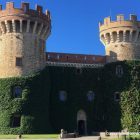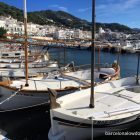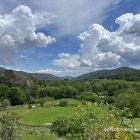Located seventy kilometres inland from Barcelona, with a population of only 50,000, Vic is a charming city that boasts one of the largest arcaded plazas in Spain.
The plaza is the heart of Vic’s historic quarter, which features a magnificent medieval cathedral and a smaller Roman temple dating back to the second century. The plaza also hosts two weekly farmers’ markets, making it a bustling hub of activity.
Despite its diminutive size, Vic has long been an important local centre and has more than enough attractions to keep you busy during a day trip from Barcelona. In this post, we take a look at what to see and do in Vic and places to visit in the surrounding area.
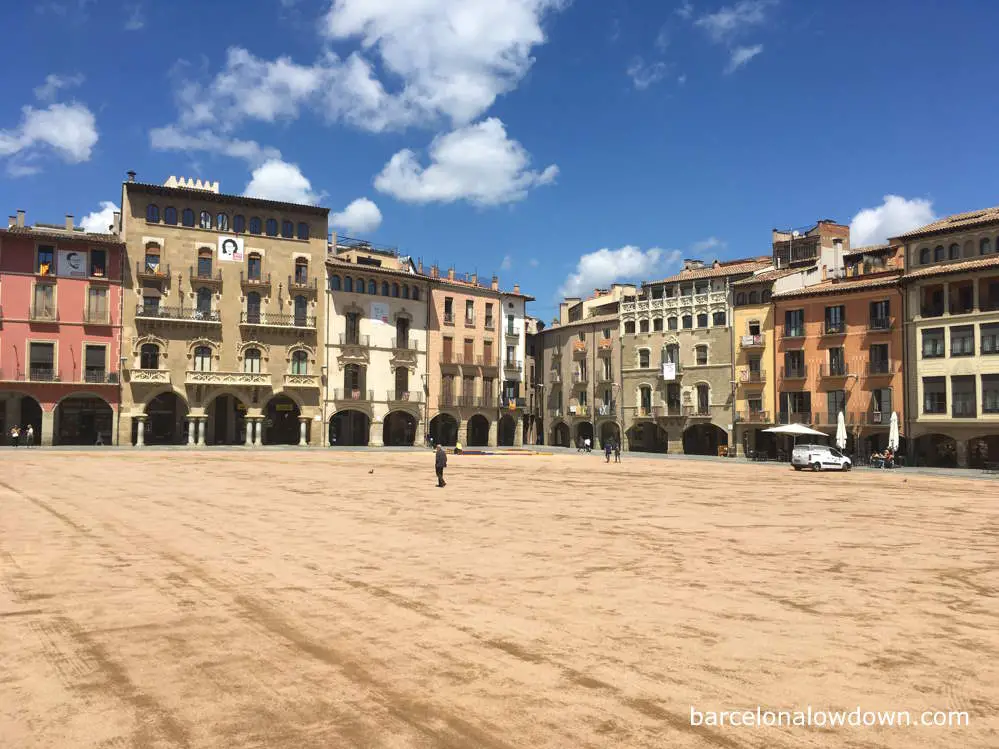
The Main Square (Plaça Major)
One of the most emblematic sights in Vic is the impressive Plaça Mayor, which is the largest arcaded plaza in Catalonia. The plaza has been hosting a weekly market since the ninth century AD and is one of the most historic parts of the city.
While the first buildings surrounding the plaza were built in the twelfth century, the current ones were constructed between the fourteenth century and the beginning of the twentieth century.
Vic Cathedral
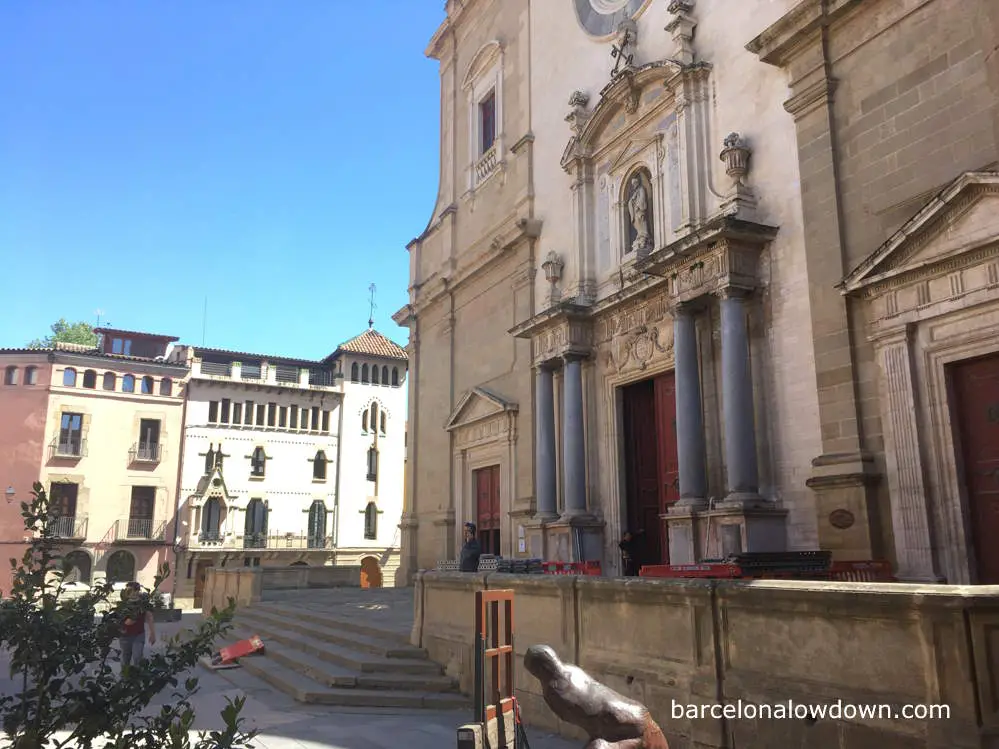
Vic’s cathedral dates back to the sixth century, although it has been destroyed and rebuilt on numerous occasions. The oldest parts of the building which stand today are the crypt, which dates back to the tenth century, and the impressive bell tower, which was part of the eleventh-century Romanesque cathedral built during the eleventh century by Abat Oliba. The rest of the cathedral was built in the neoclassical style during the eighteenth century.
In 1900 Josep Maria Sert was commissioned to paint a large mural which covered the interior of the Cathedral and took thirty years to complete. Shortly after the original mural was completed, it was destroyed by fire during the Spanish Civil War. After the war was over, Sert re-painted the mural, which was finally completed in nineteen forty-five.
The MEV Museum of Medieval Art
Another top attraction in Vic is the Episcopal Museum, which has recently been rebranded as the MEV or Museu d’Art Medieval (Museum of Medieval Art).
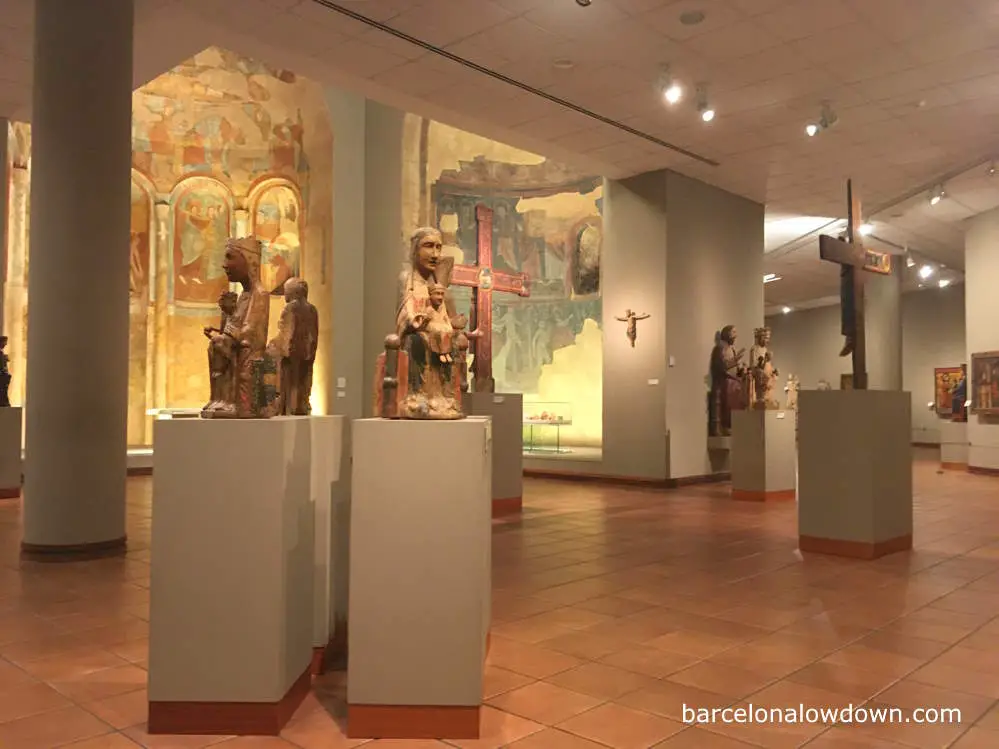
Set over four floors, the museum contains an impressive collection of Romanesque and Gothic religious art, including murals, statues and altarpieces taken from churches in the surrounding area. The museum also houses an interesting collection of glass and silverware, as well as historic liturgical vestments dating back to the fifteenth and sixteenth centuries.
The museum opens from Tuesday to Saturday from 10:00 to 19:00 and Sundays from 10:00 to 14:00. There’s more information on the museum’s website.
The Historic City Centre
With more than two thousand years of history, the narrow streets of Vic city centre are a fascinating place to explore on foot.
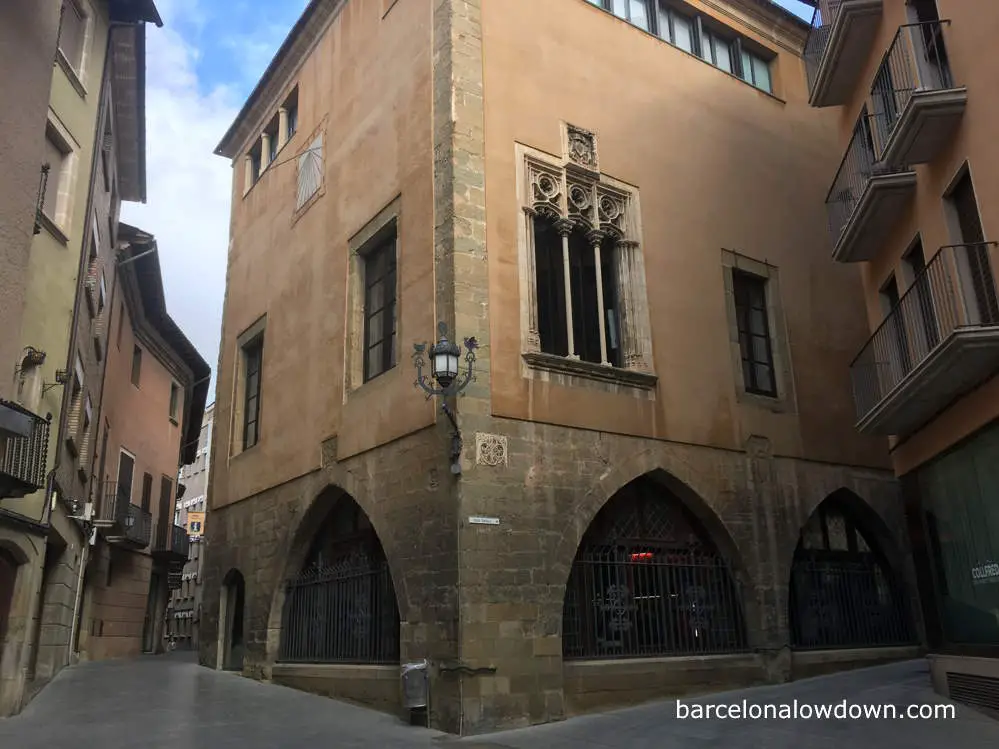
Turisme de Vic, the city’s official tourist office, has done a great job of planning a walking route which visits the most interesting and historically significant buildings. You can pick up free leaflets with a map of the route, which takes about forty-five minutes to complete, from the tourist office near the Plaça Major (see the map below).
The Roman Temple
The impressive Roman Temple dates back to the second century when most of the countries surrounding the Mediterranean were part of the Roman Empire.
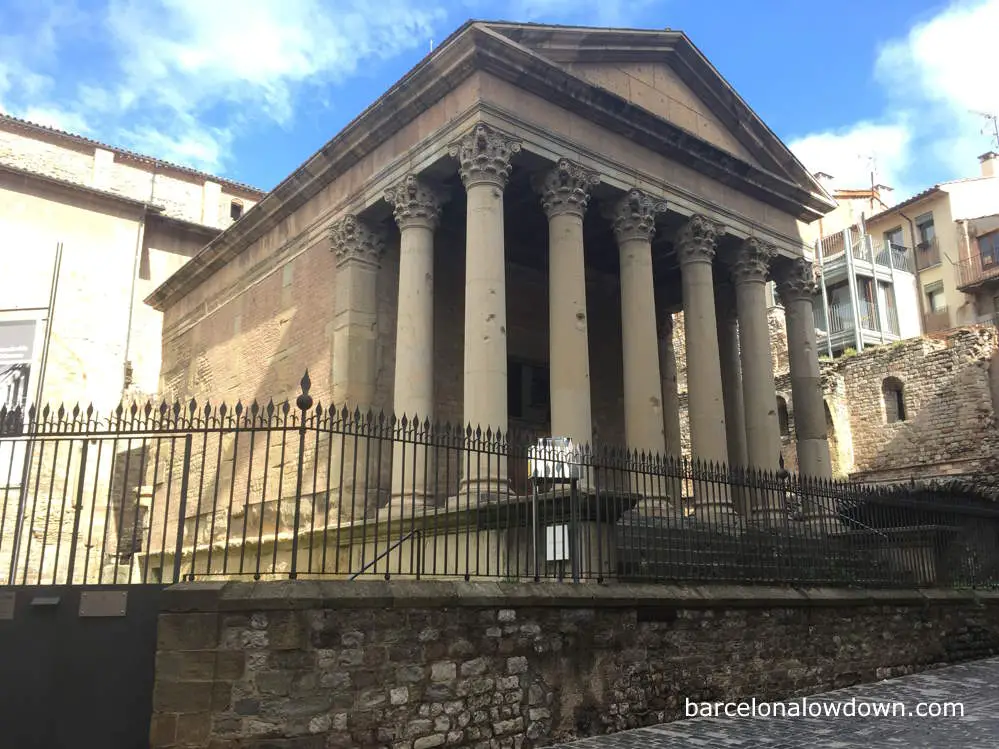
During the ninth century, when Wilfred the Hairy set about repopulating the area around Vic and built a castle which incorporated the walls of the temple into an interior patio. The castle later belonged to the Montcada family before being converted into a grain store and, finally, a prison. In 1882, the remains of the castle were torn down, and the original Roman temple was rebuilt from amongst the ruins.
The Medieval Walls

During the middle ages, Vic was surrounded by a defensive wall with seventeen towers and seven gateways which were built during the twelfth century.
Today most of the walls have either been torn down or incorporated into newer buildings. The largest section of the medieval wall, which remains intact, is the stretch alongside the Rambla dels Montcada, near the Querralt bridge.
Querralt Bridge
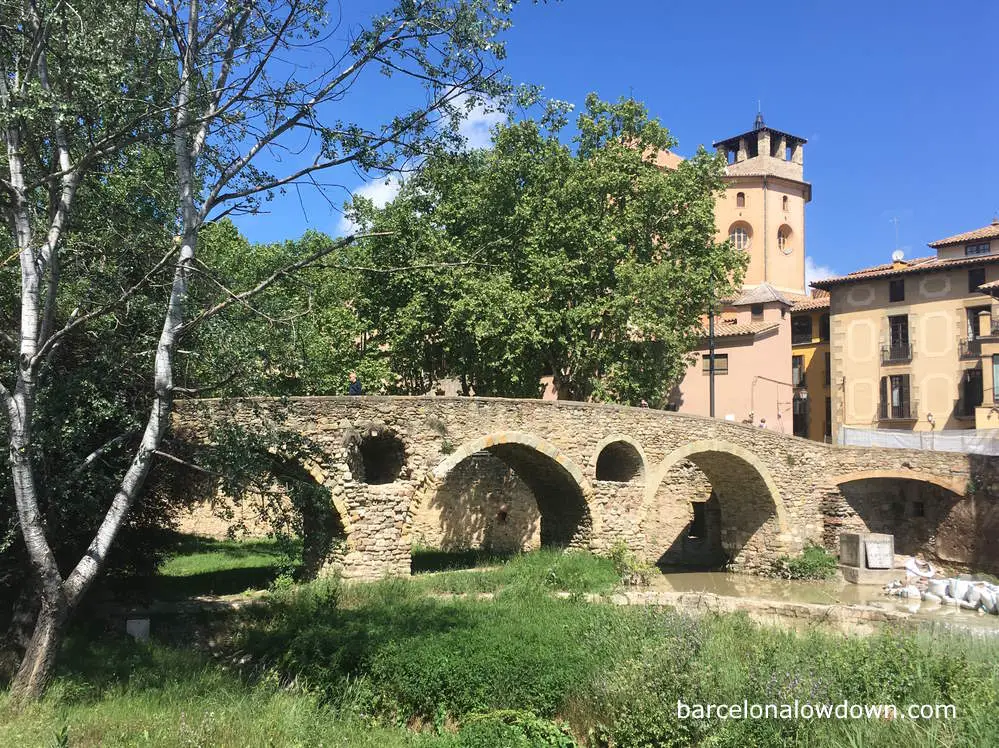
Just outside the Roman walls stands the Querralt Bridge which is a medieval toll bridge that was built during the eleventh century. The bridge, which crosses the river Mèder, was the point of access for travellers arriving in Vic from the north on the old Camí Ral.
If you have time and are a fan of bridges, there’s another medieval bridge on the outskirts of Vic called El Pont d’en Bruguer, which crosses the River Gurrí.
Hot air balloon flights
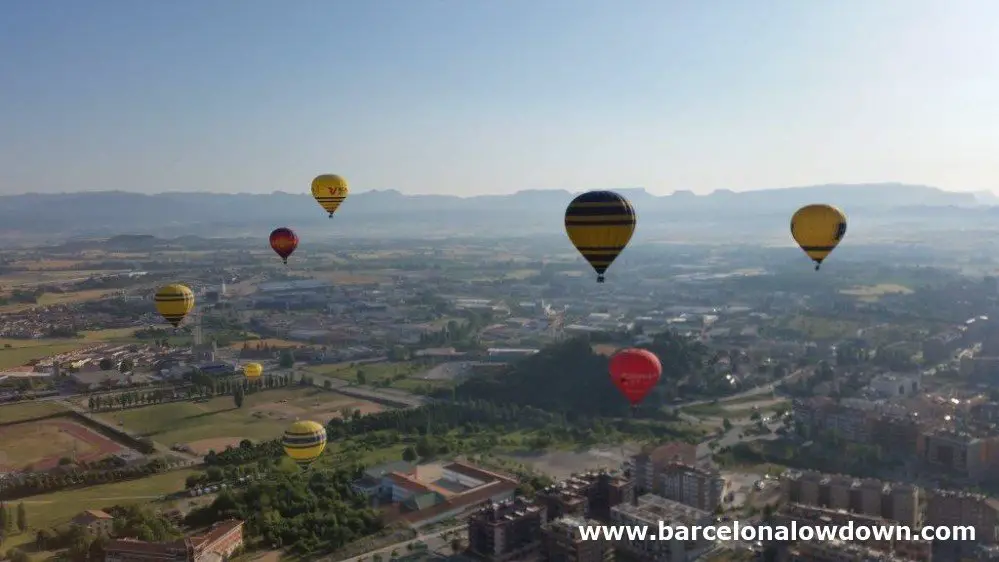
Vic’s unique location, in a large area of flat land surrounded by mountains, makes it an ideal spot for ballooning. Several companies offer early morning balloon flights from Vic, which take you to see sights such as the mountain of Montserrat, the Garrotxa Volcanic Zone or the Sau Reservoir. There’s more information in this post.
Casa Reira Ordeix
Vic is famous throughout Spain for the production of cured sausages, and you will find fuet, butifarras and llonganissas in shops throughout the city. If you want to get an insight into how they are produced, you can visit the Casa Reira Ordeix factory and shop at Plaça dels Sants Màrtirs, 14. Please note that, as a long-time vegetarian, this is an attraction which I have so far avoided. If you do visit, let us know what it’s like in the comments below.
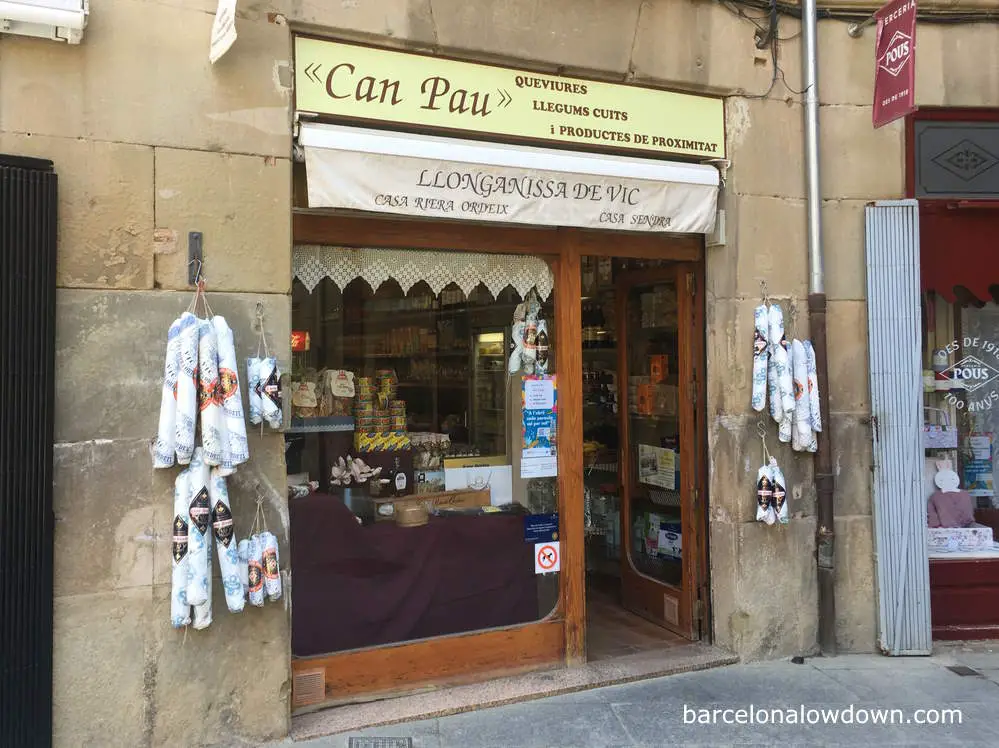
Museum of Leather Art
In addition to sausages, Vic’s other traditional industry is leather production. Apparently, when the industry was at its peak, there were a total of twenty-five workshops and tanneries in the city, most of which were located near the Querralt bridge, on what was then the outskirts of the city.
The Museum of Leather Art boasts an extensive collection gathered by Andreu Colomer Munmany, a prominent tannery owner in the city. The collection features leather objects from various parts of the world, such as trunks, decorative pieces, and furniture. Although I have not yet had the chance to visit this attraction, it is on my list of must-visit places when I return to Vic.
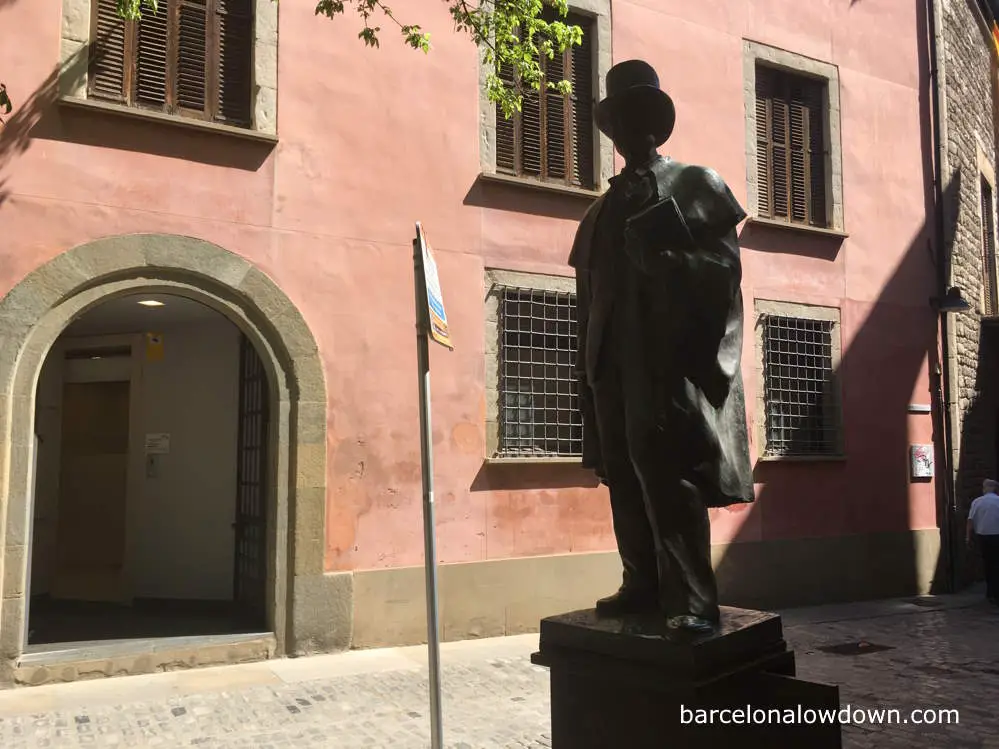
A brief history of Vic
The town of Vic dates back to the fourth century BC when it was called Ausa, named after the Ausetanos, an Iberian tribe who lived in the area.
During the time of the Roman Empire, the town grew and became an important local centre, and in the second century, a temple was built on the city’s highest point.
Ausa continued to thrive under Visigoth rule until the eighth century when, after the Moorish invasion of the Iberian peninsula, it became isolated in a no-mans land which separated the Muslim territories to the south from the Christian lands of the north. The town was finally all but destroyed during a battle in 788.
In 878 Wilfred the Hairy, the count of Barcelona retook the town, which was renamed Vich, derived from the Latin name Vicus Ausonae. The count built a castle on the site of the old Roman Temple and gave part of the city to the Bishop of Vic. Throughout the rest of the middle ages, the city was effectively divided into two parts. The area surrounding the Cathedral, which belonged to the Catholic church, and the area surrounding the castle and the marketplace, which belonged to the Montcada, a noble family who were given control of the rest of the city.
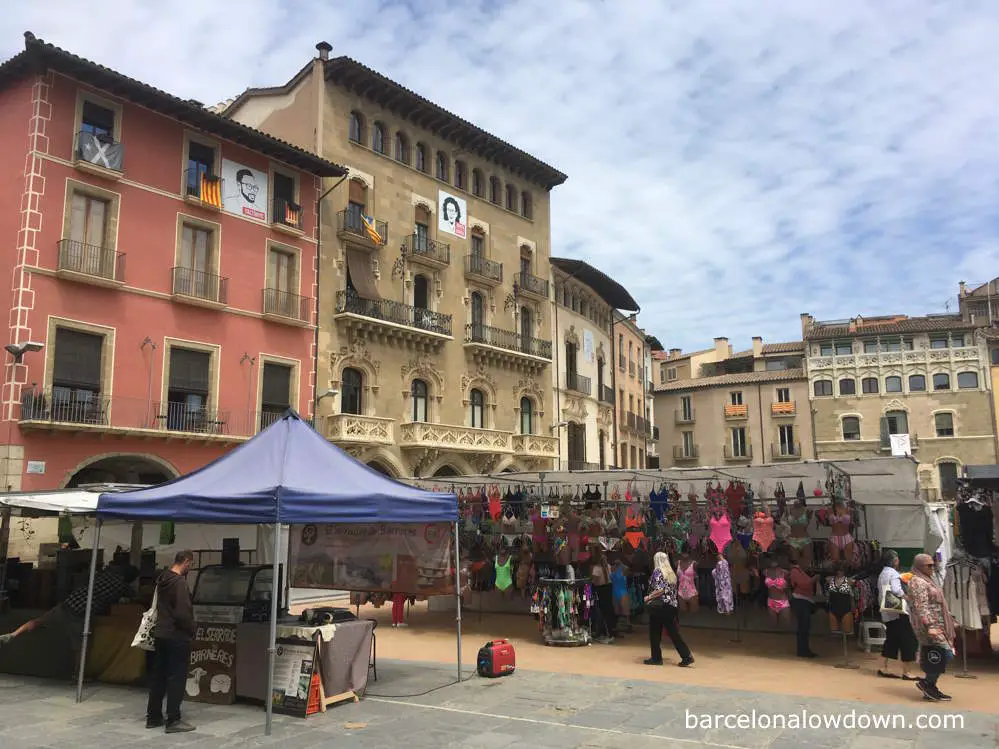
Finally, the land belonging to the church was handed over to the crown and in 1450, Alfonso V of Aragon bought out the Montcada and reunited the city. During the three centuries which followed Vic suffered the consequences of a series of conflicts and wars, first against the French and then during the War of the Spanish Succession, when Vic sided with the Archduke of Austria.
The eighteenth century saw some degree of economic recovery in Vic, and by the time of the Industrial Revolution, and the construction of the railway from Barcelona, the city was once again an important local centre.
Vic festivals and events
Vic farmers market
Every Tuesday and Saturday, a regular farmers market takes place in the Plaça Major de Vic. The entire square fills with stalls, most of which sell locally produced meat and vegetables, although there are a few stalls selling clothing and household items.
MMVV music festival
The MMVV music festival, which takes place in September, is a showcase for new and emerging talents from the local area and abroad. A diverse mixture of stages is set up throughout the city, ranging in size from street corners to more conventional auditoriums. Find out more >>
Vic Medieval fair
Every year in December, Vic hosts its renowned medieval fair that spans over four days. This fair is one of the best-known medieval fairs in Catalonia and attracts a significant number of visitors from Barcelona. Find out more >>
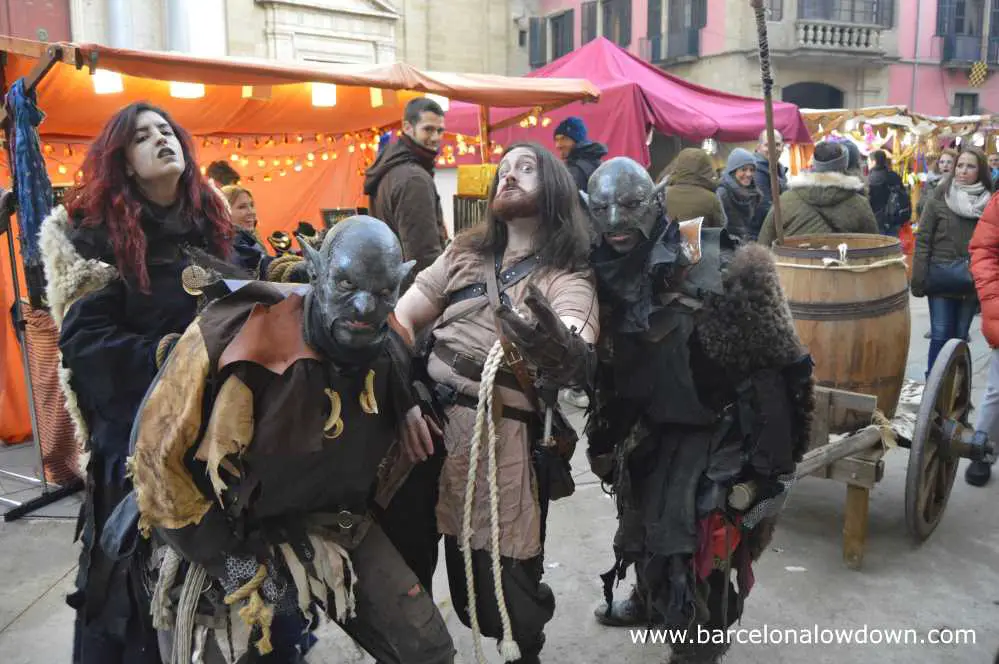
Places to visit near Vic
The Monastery of Sant Pere de Casseres
Sant Pere de Caceres is an eleventh-century Romanesque-style monastery which stands on a hilltop overlooking the River Ter, fifteen kilometres from Vic.
The well-preserved monastery is open to the public and can be visited from Tuesday to Sunday from 20:00 to 17:30 (19:30 in the summer).
Unfortunately, the monastery can’t be reached by public transport. If you haven’t got a car, the tourist office in Vic does sometimes organize guided tours. Another alternative would be to stay in the Parador de Sau, which overlooks the Sau Reservoir and is about three kilometres from the monastery.
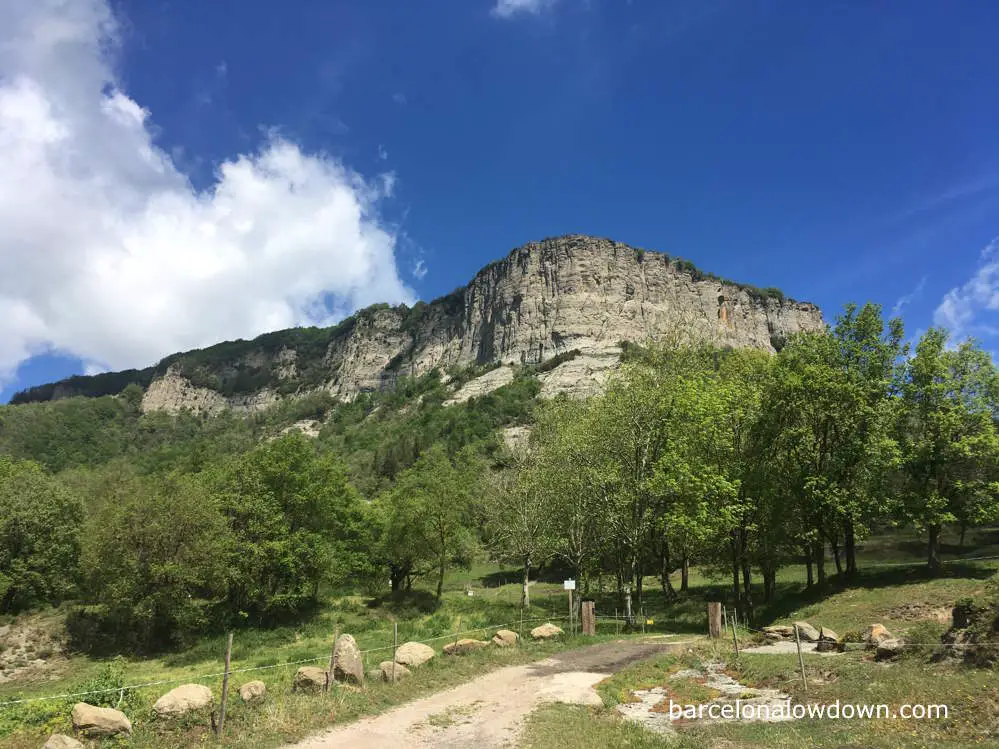
The Sau Reservoir
The Sau Reservoir is a 151-hectare man-made reservoir located in the Savasona Natural Park, eighty kilometres from Barcelona.
The reservoir was built in 1962 when a large dam was constructed across the course of the River Ter. Shortly after the dam was completed, the entire village of Sant Romà de Sau was submerged, and today, the only reminder of the village’s existence is the bell tower of the parish church which, depending on rainfall, can sometimes be seen protruding from the waters of the reservoir. During periods of extreme drought, the entire church becomes visible.
Tavertet
Tavertet is a tiny medieval village built on a rocky crag overlooking the Sau and Susqueda Reservoirs. The tiny village, which is home to just 150 people, boasts spectacular views of the reservoirs and the Collsacabra mountain range and can be reached by car or on foot from Rupit.
Rupit i Pruit
Rupit is known as one of the most picturesque villages in Catalunya. The village, which dates back to the sixteenth century, is a labyrinth of narrow cobblestone streets and stone houses with traditional wooden balconies. Other sights include the wooden suspension bridge, the church of Sant Miquel and the remains of Rupit Castle.
Rupit is slightly larger than Tavertet, and there are several hotels and restaurants in the village. This makes Rupit a popular base for exploring the surrounding area.
Bus company Sagalés operate several buses per day from Vic to Rupit. The journey takes approximately one and a half hours, depending on the route. Alternatively, Get Your Guide run tours of Rupit from Barcelona, which include hiking in the nearby Collsacabra mountains.
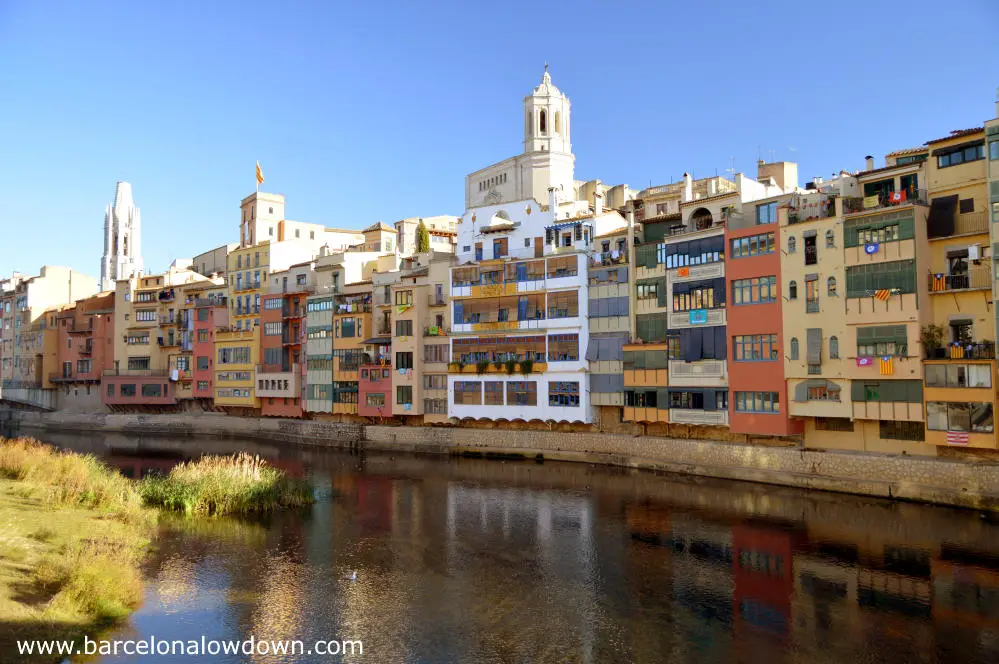
Girona
The town of Vic is situated equidistant from Barcelona and Girona, which was featured in Game of Thrones series six when scenes from Bravos, Oldtown and Kings Landing were filmed in different parts of the city centre.
The old city centres on the medieval cathedral, which stands imposingly atop a wide stone staircase and dates back to the eleventh century. Other notable buildings include the Arab baths, the Church of Sant Feliu, and the Monastery of Sant Pere de Galligants, which houses an archaeological museum.
Girona is a popular day trip from Barcelona and also has an international airport with direct flights from the UK and other European countries.
Where to stay in Vic
Although most people visit Vic as a day trip from Barcelona, the town is also a good base for visiting the surrounding area and has several good and inexpensive hotels. I can recommend Hotel J. Balmes, which is a modern hotel located near the hospital, a ten-minute walk from the town centre. If you prefer a more central location, then I’ve also heard good things about the hotel above the train station, although I’ve not stayed there myself.
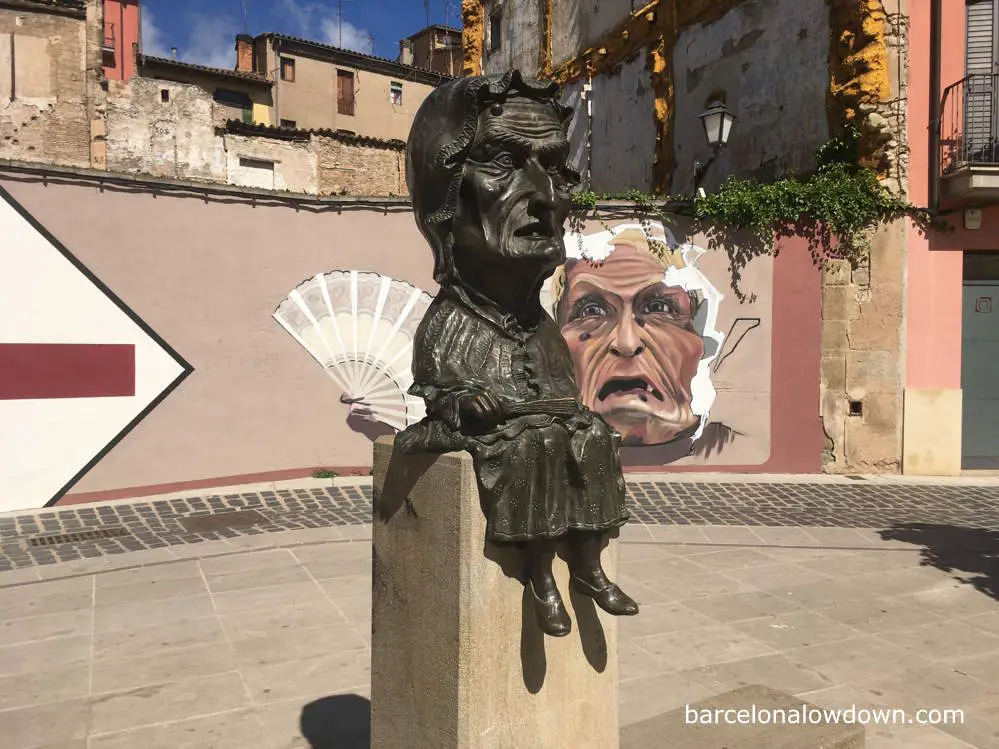
Vegetarian restaurants in Vic
Agape
Agape, the only vegetarian restaurant in Vic, is located near the Roman temple at Carrer Pregres, 2. The restaurant serves international-style vegetarian dishes, including vegan options, in a pleasant, informal dining area. Unfortunately, they were closed for vacations the last time I visited Vic, but you can check their opening times on the Agape Facebook page.
How to get to Vic from Barcelona and where to park
By car
Vic is approximately sixty kilometres from Barcelona, and it takes around an hour to drive there from Barcelona, depending on traffic. From Barcelona, you take the C-33 to Montmeló, followed by the C-17 to Vic.
There’s a large underground car park located right next to the Plaça Major at Carrer de Jacint Verdaguer, Plaça Major, 9.
By train
The easiest way to get to Vic from Barcelona is to take the R3 train. Trains depart every thirty minutes, and the journey lasts an hour and a quarter. From the train station, it takes about five minutes to walk to the Plaça Major.
Train timetables here.
By bus
From Monday to Friday, bus company Sagalés run an express bus to Vic, which departs from Av. Meridiana, timetable here.
Although on paper the bus is slightly faster than the train, I don’t recommend it because, unlike the train which stops in Plaça de Catalunya, the point of departure is near the outskirts of Barcelona.
Tours
Get Your Guide operates a one-day tour of medieval towns and villages near Barcelona, which visits Vic, Santa Pau, Castellfollit de la Roca and Besalu.
Map of Vic
Zoom in to see the locations mentioned in this post.
Plaça dels Sants Màrtirs, 14, Vic
Carrer de l’Arquebisbe Alemany, 5, Vic
Rambla de Montcada, Vic
Carrer de Francesc Pla el Vigatà, 6, Vic
Carrer del Progrés, 2, Vic
Carrer del Cloquer, 5, Vic
Plaça de l’Estació, 11, Vic
Plaça del Bisbe Oliba, 3, Vic
Vic
Plaça del Pes, Vic
Carrer del Pare Xifré, 2, Vic
Plaça Major, Vic

